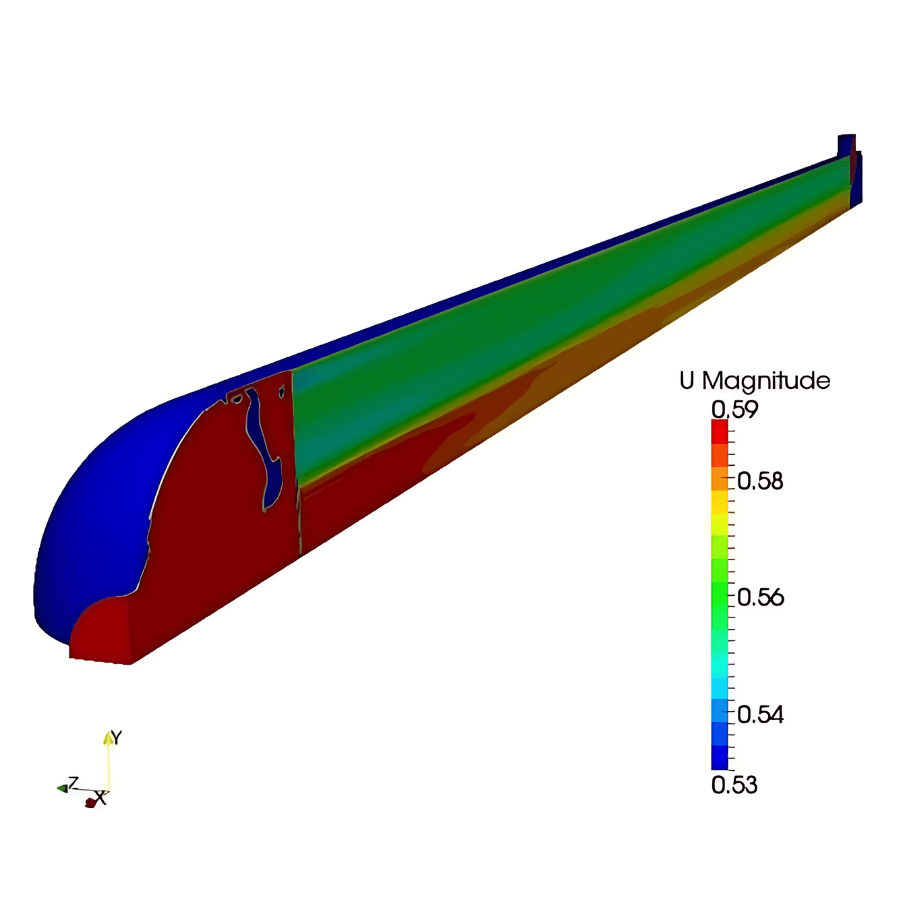CFD Studies And Simulations

Foam Drainage Analysis for a Tangential Cyclone
A qualitative study is performed of the foam drainage process in a tangential cyclone. Fundamental relations are derived that describe the drainage process in a cyclone. With these relations, it is possible to capture the effects of the various medium, geometry, and flow parameters on the efficiency of the drainage process and determine the drainage times for specific cyclone configurations.
Based on the derived relations, estimations are made of the drainage times and efficiencies for a number of cyclone configurations. Furthermore, recommendations are given to improve drainage efficiency.

CFD Analysis of the Header of a Finger-Type Slug Catcher
The flow in the header of a finger-type slug catcher is analyzed using CFD techniques. To design a high-performance finger-type slug catcher, the fluid flow in the inlet header manifold must be evenly distributed among the different figures.
Dynaflow performed a detailed flow analysis by means of CFD using OpenFOAM code. Different configurations are defined and compared using the time-averaged mass flow at the finger inlets.

CFD Analysis of the Salt Flow in a Tube Heat Exchanger
The results of the Computational Fluid Dynamics (CFD) analysis are presented for an oil-salt heat exchanger that is located in a thermal solar plant. The analyses focus on the salt flow in the shell side of the exchanger and are intended to capture the salt velocity distribution, pressure drop, and possible wake regions that can cause excessive corrosion.
Before the full 3D flow simulations, a detailed study is made to model the pressure drop of the tube bundle through a porous medium. For the CFD simulations, OpenFOAM is used.

CFD and Thermal Calculations of the Pre-heating of a Heat Exchanger
A CFD study is performed to predict the velocity distribution of the hot air flow that is used to pre-heat the tube bundle of a heat exchanger.
The obtained data is used to predict the difference in temperature growth between individual tubes located in the exchanger over time. Too large thermal gradients between individual tubes may cause the tubes to buckle.
For the CFD simulations OpenFOAM has been used and to obtain detailed results a separate Finite Element Analysis program has been developed.

CFD Analysis of the Two-Phase Flow in the Finger of a Slug Catcher
The two-phase flow in the finger pipe of a finger-type slug catcher is analysed using CFD techniques. When the fluid flow in the inlet header manifold is evenly distributed among the different fingers, it is necessary to obtain stratified flow to promote liquid separation.
The two-phase flow in the separation section is simulated to study the amount of liquid separation. The two-phase flow in the separation section is simulated to study the amount of liquid at the intersection with and through the gas riser.
Dynaflow performed a detailed two-phase flow analysis employing CFD using the commercial Ansys CFX code. Shadow calculations are successfully performed using the open-source framework OpenFOAM code.

CFD Analysis of the Flow Around a Butterfly Valve
In order to verify the sizing of the actuator the flow around a butterfly valve was investigated. The water flow over the valve was modeled as an incompressible, unsteady flow by means of general purpose CFD package OpenFOAM.
The study focused on the determination of the relation between the torque acting on the shaft of the valve and the opening of the valve.
As expected, it was found that the forces and moments acting on the valve are highly dependent on the mass flow rate and valve opening. For specified process conditions, the actuator should be able to cope with the flow-induced torque.



